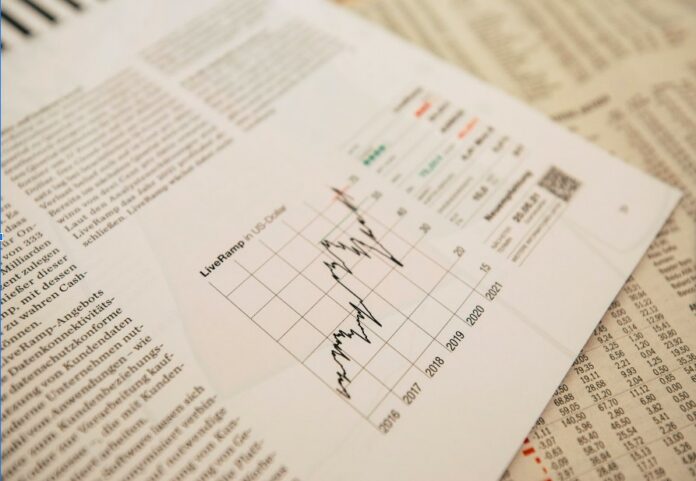In the ever-evolving landscape of the stock market, pinpointing the highest volume stocks today stands as a critical task for investors aiming to decode the market’s current rhythm. The number of shares traded within a particular period—known as trading volume—acts as a mirror reflecting the market’s vibrancy, liquidity, and the collective investor interest in specific stocks. When trading volume peaks, it usually indicates strong market participation, often driven by recent news or the stock’s prevailing significance. In contrast, a dip in volume might suggest waning interest or stagnancy, typically leading to price inertia. Thus, volume analysis is not just a number game; it’s a vital part of market evaluation, offering a narrative beyond the figures.
This in-depth analysis shows that trade volume is more than simply a statistic; it’s the market’s heartbeat, revealing underlying market dynamics and layers of investor behavior. For instance, a revolutionary product introduction may cause a jump in volume for a company like Apple Inc., indicating increased investor interest. Conversely, prior to its demise, Enron demonstrated substantial trade volumes that were driven more by speculative trading than by encouraging developments. It is vital for new and seasoned traders alike to comprehend this ebb and flow of trading activity. It gives them the knowledge necessary to create well-informed investment plans.
Understanding Stock Trading Volume
Deciphering the subtleties of stock trading volume is essential to understanding market patterns. It represents the total volume of contracts or shares exchanged and serves as a gauge of the strength of the conviction underlying a stock’s price movement. For example, Tesla Inc.’s stock trading volume surged upon the announcement of its most recent autonomous driving technology, indicating strong market interest. On the other hand, lower trade volumes during a business like Yahoo’s downturn indicated waning market confidence.
Technical analysts rely on volume as a reliable ally to confirm patterns and chart formations. A rising stock price with large trading volume is seen as more believable than a similar gain on thin volume. Microsoft Corp. is one company that frequently experiences this after its earnings release. Furthermore, volume analysis is helpful in identifying possible reversals. A sharp increase in volume may indicate impending major price changes and indicate a change in the direction of a stock’s movement.
Case Studies in Major Markets
Diverse international marketplaces provide discrete high-volume trading situations, each influenced by specific elements.
- US Market: Giants like Apple Inc. and Microsoft Corp. frequently see high volume trading on the U.S. market, with volume spikes frequently occurring in response to new product announcements or earnings announcements.
- Nifty 50 (Indian Market): Local economic changes or business announcements often lead to volume rises for firms such as Reliance Industries and Infosys in the Indian context.
- TSX and TSXV (Canadian Market): In Canada, market-specific news and factors like commodities prices frequently influence the volume leadership of companies like Shopify and Barrick Gold.
Driving Forces Behind High Volume Trading
Variations in stock trading volume are caused by a multitude of causes, each of which illustrates a different aspect of the overall story of the market. Let’s examine a few major factors:
Key Drivers of Trading Volume
- Corporate Events: Notable volume movements are frequently brought about by mergers and earnings announcements, such as Amazon’s acquisition of Whole Foods.
- Economic Indicators: Changes in inflation rates or interest rates can have a big influence on trade volumes.
- Market Sentiment: Abrupt volume variations can be brought on by worldwide events, such as the start of a pandemic.
- Institutional Investors: Stock volumes can be significantly impacted by large trades made by important players.
Implications of High Trading Volumes
Increased trade volumes may indicate a number of different market conditions. A stock may indicate considerable investor interest or significant company events if the volume is consistently high. These patterns are frequently seen by analysts—including those at Goldman Sachs—as essential for validating price fluctuations. High volume, however, might also indicate speculative or panic selling patterns that affect volatility and market efficiency. Other important factors to take into account include the influence of institutional participants and the possibility of market manipulation.
Leveraging High Volume Stock Data for Maximum Benefit
Investors combine high-volume stock data with other indications, such as price patterns and business fundamentals, to make the most of it. Technical indicators are added to volume data analysis by traders, such those at Morgan Stanley, in order to identify possible trading opportunities. This all-encompassing strategy facilitates intelligent and successful trading decision-making.
A Closer Look at Today’s High-Volume Trading Landscape
Making wise investing selections in the present market, which is known for its large volume trades, requires an awareness of and accurate interpretation of volume data. This information is essential for anybody navigating the intricacies of today’s financial markets, regardless of whether they are using it for long-term plans or short-term transactions. This post provides a thorough and up-to-date overview of the high-volume stock trading industry, making it an invaluable tool for investors and traders in these fast-paced times.


